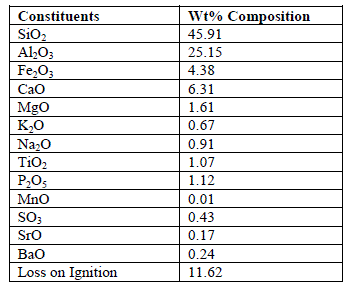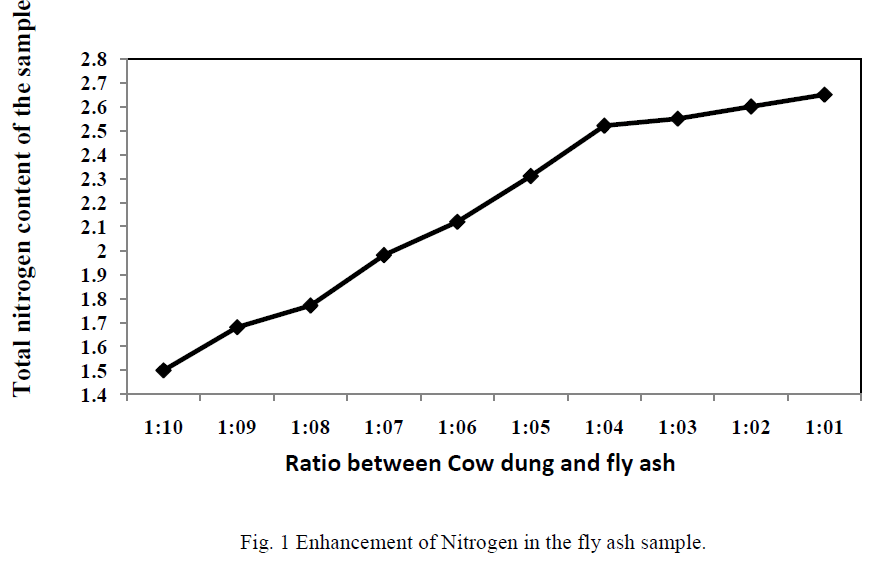ISSN ONLINE(2319-8753)PRINT(2347-6710)
ISSN ONLINE(2319-8753)PRINT(2347-6710)
T.K.Panda1, D.Rout2, B.Rout3 and B.B.Kar2
|
| Related article at Pubmed, Scholar Google |
Visit for more related articles at International Journal of Innovative Research in Science, Engineering and Technology
In the present study, an attempt has been made to develop the fertility capacity of fly ash as a soil substitute to enhance wide application of fly ash in agricultural field. In order to study the impact of cow dung in developing fertility of fly ash, a set of experiments were carried out by taking different ratio of fly ash and cow dung. The mixed samples were tested to observe the growth of sunflower plants in it. The study revealed that when the fly ash : cow dung ratio was found to be 5:2, the mixed sample could provide appreciable growth to the plants with the gradual increase in FLY ASH : COW DUNG ratio up to 5:3 there is a healthy growth of the plant after which decrease in the ratio has no adequate effect on plant growth. The date generated were compiled and the result has been summarized in the study.
Keywords |
| Text detection, Inpainting, Morphological operations, Connected component labelling. |
INTRODUCTION |
| Fly ash, a waste generated due to the burning coal is found to be an important basic material which has to be utilized extensively. So, for the utilization is concerned, presently its major utility is in cement and concrete product. As the composition of fly ash varies with burning of various coals such as lignite, bituminous, semi bituminous, anthracite etc, this variability in composition both in chemical and mineral parameters(1-2), can make it possible to serve them as raw materials for the manufacture of different value added products. The different utility of fly ash has been tabulated in Table-1 as represented below:- |
 |
| Here the glassy phase can contribute to preparation of Zeolite, to prepare some structural components and to be used as insulating mediums etc. |
| The charcoal which is left un-burn are subjected to produce activated carbon or as fuel supplements. Magnetic ceramics are produced from raw magnetite. The hollow sphere structures consisting of silica, alumina and iron oxides can be used as polymer fillers, preparation of light weight ceramics and substances with lower dielectric constant. |
| In the present study, an attempt has been made to utilize fly ash as a soil substitute. This conceptual comparison has been brought up with the fact that Soil and Fly ash, both are highly stable Inorganic Compounds(3-8) with an invariable composition. In basic matrix is silica, alumina and the elements are present in their oxidic form. Thus, keeping in view the above similarities, an attempt has been made where fly ash can be utilized as a soil substitute. |
II. EXPERIMENTAL |
| To study the soil amendment property of fly ash and to utilize it as a substitute for Soil, in the present investigation a fly ash sample has been subjected to study with the following composition as represented in Table-2. |
 |
| In order to modify the composition of fly ash to be similar to that of soil, cow dung is added at various ratio to the fly ash sample to enhance the wt% composition of P, N, K in fly ash(9-12). The cow dung used in the study has the following composition as represented in Table-3. |
 |
| The samples were mixed with various ratio so as to study the impact of cow dung to increase the potentiality of fly ash, which in turn can be used as a soil substitute. In the study, the ratio of FLY ASH to Cow Dung is represented in Table- 4 as follows:- |
 |
| During the study, the Tulsi plant is subjected to grow in each individual composition in triplicate and the growth of the plant was monitored. The addition of COW DUNG to the FLY ASH sample has been carried out uniformly and the samples were kept for proper conditioning for a period of one month. The growth in enhancement of nitrogen in the fly ash sample is monitored in every 7th day, 14th day, 21st day and 28th day of the month. |
III. EXPERIMENTAL RESULTS |
| The study revealed that addition of cow dung to the fly ash enhances the Potassium, Phosphorus and Nitrogen content of the fly ash sample. Addition of Nitrogen, in turn leads to nitrogen fixation when get in contact with atmospheric level. Similarly, Potassium and Phosphorus content get enhance by the wet deposition of the aerosols containing K and P. |
| It has been observed that by the addition of cow dung to the fly ash sample gradually there is enhancement of fertilizing characteristic of the fly ash sample which increases in the ratio as represented in the following diagram. |
 |
| The result shows that the Fly ashes at the samples prepared with a ratio 1:1 to 1:4 shows a constant tread of nitrogen content in fly ash though different ratios have been mixed in different pots. When the ratio is coming up to 1:5 and raising till 1:10 there is gradual decrease in nitrogen content. This may be attributed to the fact that the nitrogen content in the mixture when subjected to conditioning, in maximum only 1/4 parts of nitrogen can be transformed into the fly ash matrix for nitrogen fixation. When the ratio reaches up to 1:5, there is a distinct fall in the nitrogen level. This indicates the less absorption of nitrogen in the mixture starting from 1:5 to 1:10. It has been found that when cow dung is added to the fly ash sample, it gradually penetrates into the fly ash matrix and performs various reactions for nitrogen fixation. |
IV. CONCLUSION |
| The above study concludes that fly ash is found to be a promising material to substitute soil. In order to utilize fly ash as a substitute to soil, the nitrogen content of the fly ash sample has been increased using cow dung. The study revealed that by using cow dung as an additive, the property of nitrogen fixation can be introduced and enhanced in fly ash, which in turn can be used as a soil substitute. |
References |
|